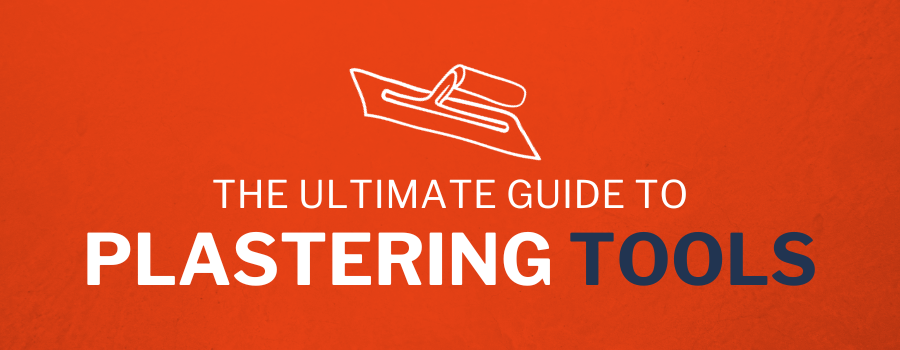Introduction to Plastering Tools
Chapter One – Plastering Trowels
Chapter Four – Straight Edges and Feather Edges
Chapter Six – Plastering Stilts and Hop Ups
Chapter Seven – Cleaning and Maintenance Tools
Introduction to Plastering Tools
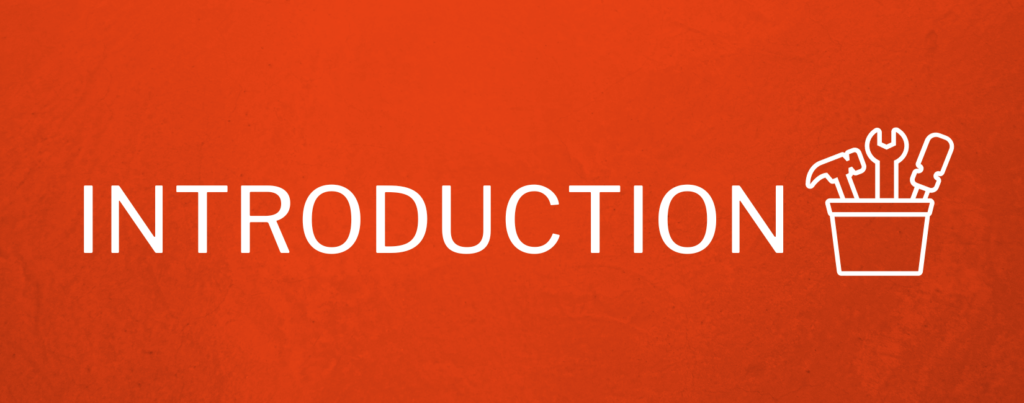
Plastering is a skilled trade that requires precision, attention to detail, and the right tools to achieve a high-quality finish.
With a wide variety of tools available for different plastering tasks, it’s essential to know which ones are best suited for your specific project.
This ultimate guide to plastering tools will help you understand the purpose and usage of each tool, ensuring that you’re well-equipped for a successful plastering job.
Chapter One – Plastering Trowels
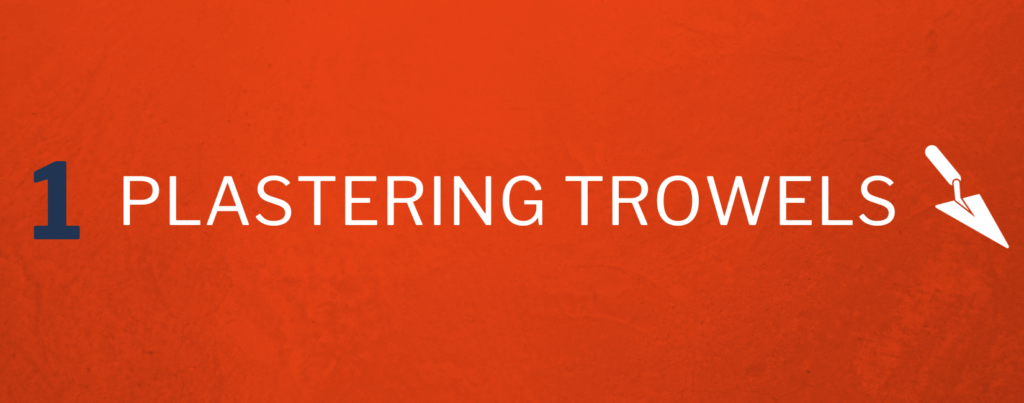
One of the most essential tools in any plasterer’s toolkit is the trowel.
Trowels come in various types, including finishing trowels, skimming trowels, and more, each designed for a specific purpose in the plastering process.
- Finishing trowels: These trowels are used for smoothing and finishing the plaster surface, providing a professional and polished look. They typically have a flat, rectangular blade made of stainless steel or carbon steel and a comfortable handle for easy use.
- Skimming trowels: Skimming trowels are designed for applying a thin layer of finishing plaster on top of a base coat, creating a smooth surface. They often feature a pre-worn blade to help achieve an even finish.
- Bucket trowels: This small, flat trowel is useful for getting plaster and compound out of the bucket and onto the hawk or mortar stand.
When selecting a trowel, consider factors such as blade size and shape, handle type, and material.
A larger blade can cover more surface area, making the job faster, while a smaller blade offers greater control for detailed work.
Additionally, choose a trowel with an ergonomic handle for comfortable use during extended periods.
Proper trowel maintenance is crucial for ensuring longevity and optimal performance.
Clean your trowel after each use, removing any leftover plaster to prevent buildup.
Occasionally check for signs of wear and replace the trowel if necessary.
Chapter Two – Hawk and Float

The hawk and float are essential tools for holding and applying plaster during the plastering process.
A hawk is a flat, square platform with a central handle underneath, used to hold plaster while you work.
A float, on the other hand, is a smaller trowel-like tool used in conjunction with the hawk to apply and smooth plaster.
When choosing a hawk, look for one made of durable materials like aluminium or magnesium, with a comfortable handle that provides a secure grip.
The size of the hawk should match your hand size and the amount of plaster you’ll typically be working with.
To use a hawk and float effectively, practice scooping plaster onto the hawk with the float, then applying the plaster to the wall with smooth, controlled motions.
Chapter Three – Mixing Tools

Properly mixing plaster is crucial for achieving a smooth, even finish.
There are several tools available for mixing plaster, including mixing drills and paddle attachments.
- Mixing drills: These are power tools designed for mixing various materials, including plaster. When selecting a mixing drill, consider factors such as power, speed settings, and overall durability. A higher wattage drill will provide more power for mixing thicker materials, while variable speed settings allow for greater control during the mixing process.
- Paddle attachments: Paddle attachments, also known as mixing paddles, are used in conjunction with a mixing drill. These attachments come in various shapes and sizes, each designed for specific mixing tasks. A helical or spiral-shaped paddle is ideal for mixing plaster, as it promotes a smooth and consistent mix.
To properly mix plaster, add the dry plaster to a clean mixing bucket, then gradually add water while operating the mixing drill with a paddle attachment.
Be sure to mix the plaster thoroughly, eliminating any lumps or inconsistencies, and achieve the desired consistency based on the manufacturer’s recommendations.
Chapter Four – Straight Edges and Feather Edges
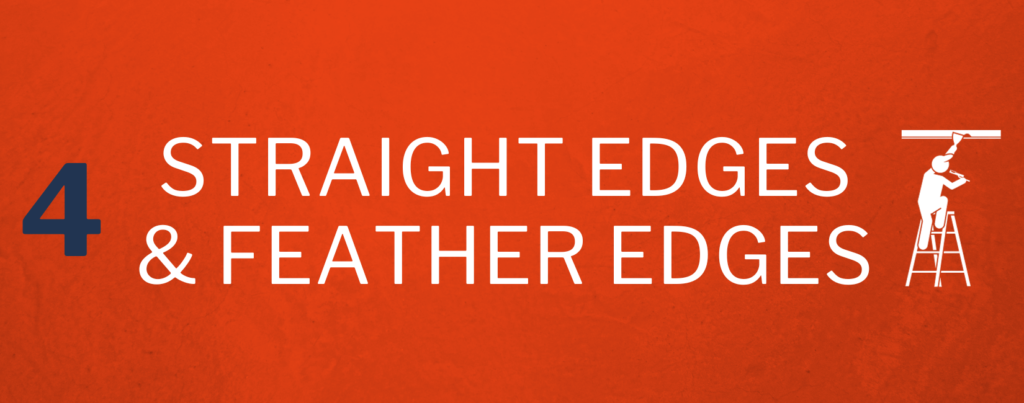
Achieving a flat, even surface is essential for professional plastering results. Straight edges and feather edges are tools designed to help plasterers accomplish this goal.
- Straight edges: These are long, straight metal or aluminium tools used to check and correct the flatness of a plastered surface. To use a straight edge, place it against the surface and look for any gaps or high spots, then adjust the plaster as needed.
- Feather edges: Feather edges are similar to straight edges, but they have a thinner profile and are typically more flexible. This flexibility allows for easier use on curved surfaces or in tight spaces.
When using these tools, work methodically across the surface, checking and correcting the flatness as you go.
This process helps ensure a smooth, even finish that will look professional and stand the test of time.
Chapter Five – Corner Plastering Tools
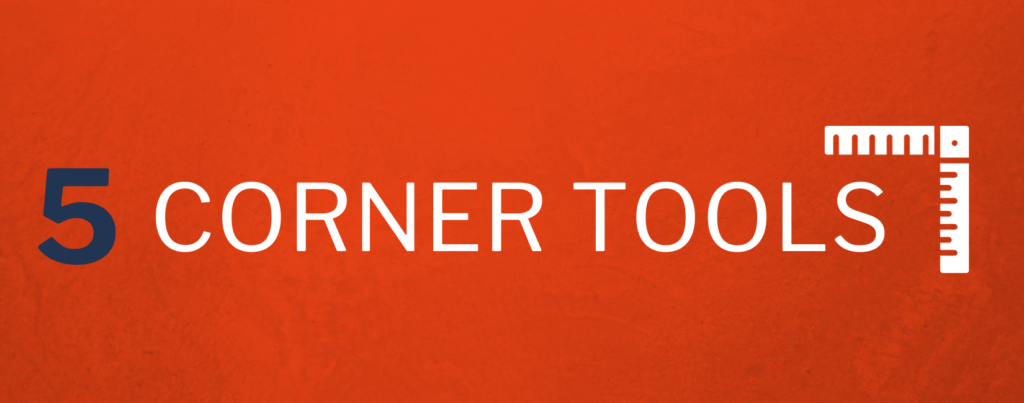
Achieving clean, sharp corners is an essential part of plastering, and specialised corner tools can help you accomplish this with ease.
Some of the most common corner tools include:
- Angle trowels: These trowels feature a blade with a 90-degree angle, designed for finishing internal corners. The angled blade allows for smooth application and shaping of plaster in tight spaces, ensuring a clean, professional finish.
- Corner floats: Corner floats, sometimes called corner sponges, are used to smooth and shape external corners after plastering. These tools consist of a sponge or foam material with a 90-degree angle, allowing you to work the plaster into a clean, sharp edge.
When working with corners, be sure to use the appropriate tool for the specific task, and take the time to ensure a precise, professional finish.
Chapter Six – Plastering Stilts and Hop Ups
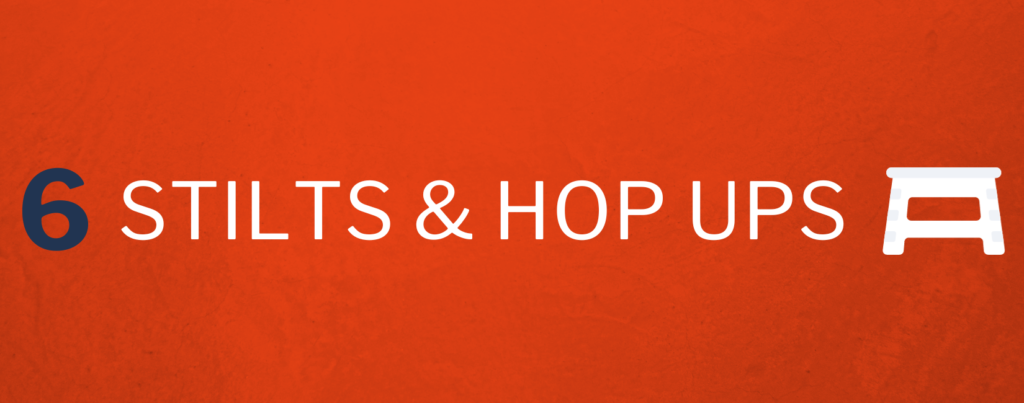
For larger plastering projects or working on ceilings, plasterers often require additional height to reach their work area comfortably.
Plastering stilts and hop ups can provide the necessary elevation, allowing you to work more efficiently and safely.
- Plastering stilts: These adjustable stilts strap to your legs and feet, allowing you to walk and work at an elevated height. Stilts offer flexibility and mobility while working on high surfaces, but they require practice and skill to use safely.
- Hop ups or ladders: Alternatively, you can use a sturdy hop up or a ladder to reach higher areas. While these options provide a stable platform for working, they may not offer the same level of mobility as stilts.
Whichever option you choose, always prioritise safety when working at height, using appropriate fall protection measures and ensuring that your equipment is in good condition.
Chapter Seven – Cleaning and Maintenance Tools

Proper cleaning and maintenance of your plastering tools are essential for extending their lifespan and ensuring optimal performance.
Some essential cleaning tools include:
- Plasterer’s brush: A soft-bristle brush is perfect for cleaning your trowels and other tools after use. The soft bristles help remove plaster without damaging the tools.
- Cleaning water and sponge: Keep a bucket of clean water and a sponge nearby while working to wipe down your tools as needed. Regular cleaning prevents plaster buildup, which can affect the performance of your tools.
After each plastering job, clean your tools thoroughly, removing all traces of plaster, and store them in a dry, protected location.
By understanding the purpose and usage of each plastering tool, you’ll be well-equipped to tackle any plastering project with confidence.
With the right tools and techniques, you can achieve a professional, high-quality finish that will stand the test of time.
Conclusion

This exploration of plastering tools has offered an in-depth view of the essential instruments used in the plastering trade, from the basic hand tools to specialised equipment.
The discussion began with the ubiquitous plastering trowel, the plasterer’s primary tool. Used for applying, spreading, and smoothing plaster, the trowel is a versatile instrument available in different shapes and sizes to accommodate various tasks and preferences.
Next, the focus shifted to the hawk and float. The hawk, a flat platform for holding plaster, and the float, used for smoothing and levelling the plaster, form a crucial partnership in the plastering process.
The importance of proper mixing was underscored in the section about mixing tools, which are essential for creating a smooth, workable plaster mix. Mechanical mixers and sturdy buckets, as well as mixing paddles for drill attachments, were identified as key tools for this stage.
Then, attention turned to straight edges and feather edges. These tools ensure a flat and level finish to the plaster, vital for achieving a professional-looking result.
Corner tools were introduced next. These specialised tools help create clean, sharp corners and edges, enhancing the finish and durability of the plasterwork.
The guide also ventured into the realm of plastering stilts and hop ups, essential for reaching high areas. While these may not be necessary for every project, they can increase efficiency and comfort for extensive or high-reaching plastering work.
Finally, the importance of tool maintenance was emphasised with a discussion on cleaning tools. Keeping tools clean and in good working order not only extends their lifespan but also ensures the best possible finish to plasterwork.
In sum, a well-equipped plasterer’s toolkit should feature a range of trowels, a hawk and float, mixing tools, straight and feather edges, corner tools, and potentially stilts or hop ups.
Additionally, proper cleaning and maintenance tools are critical for ensuring the longevity and effectiveness of this equipment. Understanding these tools, their use, and care is vital for anyone engaged in plastering, whether as a DIY enthusiast or a professional.

